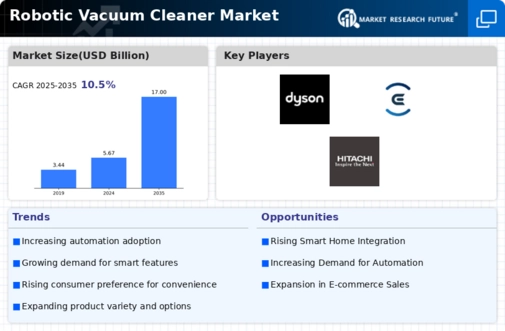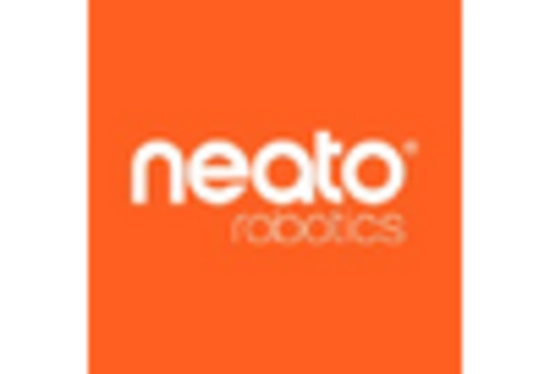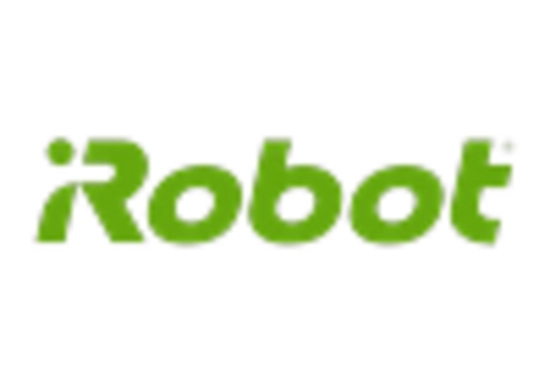Expansion of E-commerce Platforms
The expansion of e-commerce platforms is transforming the landscape of the Robotic Vacuum Cleaner Market. Online shopping has become a preferred method for consumers, providing convenience and access to a wider range of products. E-commerce platforms enable consumers to compare features, prices, and reviews easily, facilitating informed purchasing decisions. Recent statistics indicate that online sales of robotic vacuum cleaners have increased significantly, with many consumers opting for direct-to-consumer models. This shift towards online retail is likely to continue, as it offers manufacturers an opportunity to reach a broader audience and enhance brand visibility. Consequently, the growth of e-commerce is expected to further propel the robotic vacuum market.
Increased Focus on Home Automation
The increased focus on home automation is a driving force in the Robotic Vacuum Cleaner Market. As consumers seek to create smart homes, the integration of robotic vacuums with other smart devices is becoming more prevalent. This interconnectedness allows for seamless control and scheduling through mobile applications and voice assistants. Market analysis suggests that the demand for robotic vacuums that can communicate with other smart home devices is on the rise, as consumers appreciate the convenience of managing multiple devices from a single interface. This trend indicates a potential for growth in the market, as manufacturers innovate to create products that align with the broader home automation movement.
Rising Consumer Demand for Convenience
The Robotic Vacuum Cleaner Market experiences a notable surge in consumer demand for convenience-driven solutions. As lifestyles become increasingly hectic, consumers seek products that simplify household chores. Robotic vacuum cleaners offer an automated cleaning solution, allowing users to save time and effort. According to recent data, the market is projected to grow at a compound annual growth rate of approximately 20% over the next five years. This growth is driven by the increasing adoption of smart home devices, which complement robotic vacuums. As more households integrate technology into their daily routines, the demand for robotic vacuum cleaners is likely to rise, indicating a shift towards more automated home management solutions.
Technological Advancements in Robotics
Technological advancements play a pivotal role in shaping the Robotic Vacuum Cleaner Market. Innovations in artificial intelligence and machine learning have enhanced the capabilities of robotic vacuums, enabling them to navigate complex environments with greater efficiency. Features such as obstacle detection, real-time mapping, and adaptive cleaning modes are becoming standard. The introduction of advanced sensors and improved battery life has also contributed to the appeal of these devices. Market data suggests that the integration of such technologies is expected to drive a significant increase in sales, as consumers are drawn to products that offer superior performance and reliability. This trend indicates a promising future for the robotic vacuum sector.
Growing Awareness of Indoor Air Quality
The increasing awareness of indoor air quality is influencing the Robotic Vacuum Cleaner Market. Consumers are becoming more conscious of the impact of dust, allergens, and pollutants on their health. Robotic vacuum cleaners equipped with HEPA filters and advanced filtration systems are gaining popularity as they effectively capture fine particles and improve air quality. Market Research Future indicates that the demand for such features is on the rise, with a significant portion of consumers prioritizing health and wellness in their purchasing decisions. This trend suggests that manufacturers may focus on developing models that emphasize air purification capabilities, thereby expanding their market reach and appealing to health-conscious consumers.

















Leave a Comment